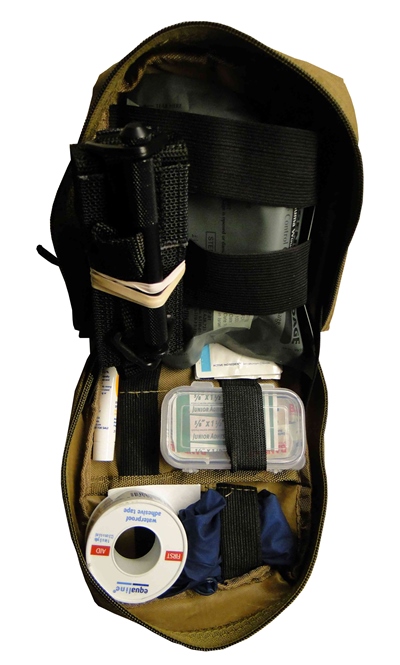Plan and prepare for life and limb threatening injuries before they occur. Get appropriate training in life saving tactical field medical skills. Practice these skills on a frequent basis. Equip yourself and teammates with an individual Operator Blow Out Kit at a minimum. Consider larger Immediate Action kits and use quality products.
Below are supplies that should be included in your individual blow out kit, and why you need it:
Cinch Tight compressed "H" trauma bandage
This is used as a primary trauma dressing for all serious bleeding, and the unique "H" point of attachment also allows it to be used as a tourniquet & deep pressure dressing. Because of the elastic bandage "tails" it can also be used to:
- Function as an elastic wrap for sprains & joint injuries
- Function as a triangular bandage replacement for slings and related dressings
- Hold splints & IV in place
Cinch Tight TK-3 combat tourniquet
This is used as the primary tourniquet for life threatening bleeding. Its design allows it to be placed by the patient or by the rescuer. It can also be used to:
- Raise veins to assist in IV starts
- Hold splints and dressings in place
Cinch Tight priMed compressed gauze roll
This is used to pack wounds, ensuring that direct pressure is applied to the source of the bleeding, and not just the outside of the wound. It can also be used to:
- Bandage smaller wounds
- Pad splints
- Hold splints & IV in place
A small amount of duct tape
This is used, along with the plastic wrapper from a dressing, to make a dressing for open chest & abdomen wounds. It can also be used
- Hold any bandage, IV, or splint in place
Hemostatic Agent
You should also include some sort of agent to aid in controlling critical bleeding such as:
- Quick Clot
- HemeCon
- TraumaDex
- QR Powder

